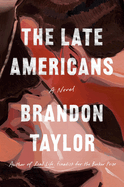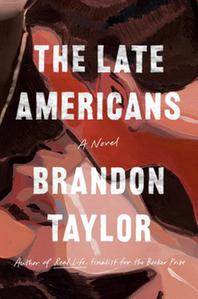
 Brandon Taylor's The Late Americans offers an insightful and razor-sharp portrait of the interconnected lives of a cohort of writers, dancers, and thinkers living in the contemporary American Midwest. Seamus is a white, aspiring poet but his holier-than-thou, woke writer's MFA workshop makes him viscerally sick. Ivan is an ex-dancer building a career in finance on the back of money raised by his pornography. And Fyodor is a mixed-race worker in a beef processing plant who can't stop pushing away his partner. Together with a whirlwind of other figures who swirl in and out of each other's lives in Iowa City, these characters share friendships and emotional fallouts, triumphs, and betrayals, forever grappling across the fault lines of race, sexuality, and class.
Brandon Taylor's The Late Americans offers an insightful and razor-sharp portrait of the interconnected lives of a cohort of writers, dancers, and thinkers living in the contemporary American Midwest. Seamus is a white, aspiring poet but his holier-than-thou, woke writer's MFA workshop makes him viscerally sick. Ivan is an ex-dancer building a career in finance on the back of money raised by his pornography. And Fyodor is a mixed-race worker in a beef processing plant who can't stop pushing away his partner. Together with a whirlwind of other figures who swirl in and out of each other's lives in Iowa City, these characters share friendships and emotional fallouts, triumphs, and betrayals, forever grappling across the fault lines of race, sexuality, and class.
Like other works by Taylor (Real Life; Filthy Animals), The Late Americans demonstrates a nuanced understanding of not only individual characters but the social worlds that tie them inextricably together. The interlinked story structure plays well to this strength of Taylor and highlights the complexity of such social dynamics. Taylor's characters unfold through specific, recognizable details, like Fyodor's tenderness toward the meat he cuts, "which was rather soft and delicate, like cloth or dough. You had to respect its natural geometry, the irregularities of how the muscle broke, the way it fell and lay"; or Seamus's particularly acute yet distant experiences of pain: "There was a faint rattle in his chest when he breathed.... His shoulder ached. He put his thumb into his mouth and bit hard on the gristle at its edge. There was a sharp prick of pain, and then only dull heat." But it's the way these people interact with each other, from new perspectives and in new contexts, like chemicals transforming in solutions, that results in a deeply evocative portrait of anxiety and vulnerability, ambition, and intimacy.
The novel has no single protagonist, but it is noteworthy that despite most characters getting one apartment-sized section, Seamus gets two. Though not aiming to win any congeniality awards, Seamus is still the character who makes many of the novel's central questions most affectively visible. How does one "pierce" the art that makes one feel something without the "betrayal of the whole project"? How does one write for oneself and for others simultaneously? And how does one honor past traumas without losing sight of the "falling apart, coming together, kissing, hugging, laughing" that make us not just human but social beings? --Alice Martin, freelance writer and editor
Shelf Talker: A splendidly wrought and emotionally engrossing novel consisting of linked character portraits, The Late Americans continues to cement Brandon Taylor as a standout literary voice.

